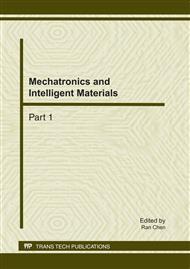p.720
p.726
p.731
p.736
p.742
p.747
p.752
p.756
p.761
Effect of Surface Relaxation on Characteristics of Nanomachined Surface
Abstract:
With the development of Micro-electro-mechanical systems (MEMS) and Nano-electro-mechanical systems (NEMS), dimension of their parts is required to nanometer scale, and the characteristics of machined-surface of nano-scale parts affect strongly its application. Surface relaxation plays an important role to the characteristics of the machined-surface. In this paper, machined-surface of monocrystal copper used as the specimen of surface relaxation, and its surface relaxation process is simulated. The influences of surface relaxation on surface energy, atom array, surface roughness, surfaces hardness and surface residual stress of the monocrystal copper are analyzed. Results show that surface energy and surface hardness decrease due to relaxation; work-hardening can’t be completely eliminated by the relaxation; compression residual stress of the machined surface is changed gradually to tensile stress during the relaxation. These research results are very helpful to the application of nano-machined parts.
Info:
Periodical:
Pages:
742-746
Citation:
Online since:
February 2011
Authors:
Price:
Сopyright:
© 2011 Trans Tech Publications Ltd. All Rights Reserved
Share:
Citation:


